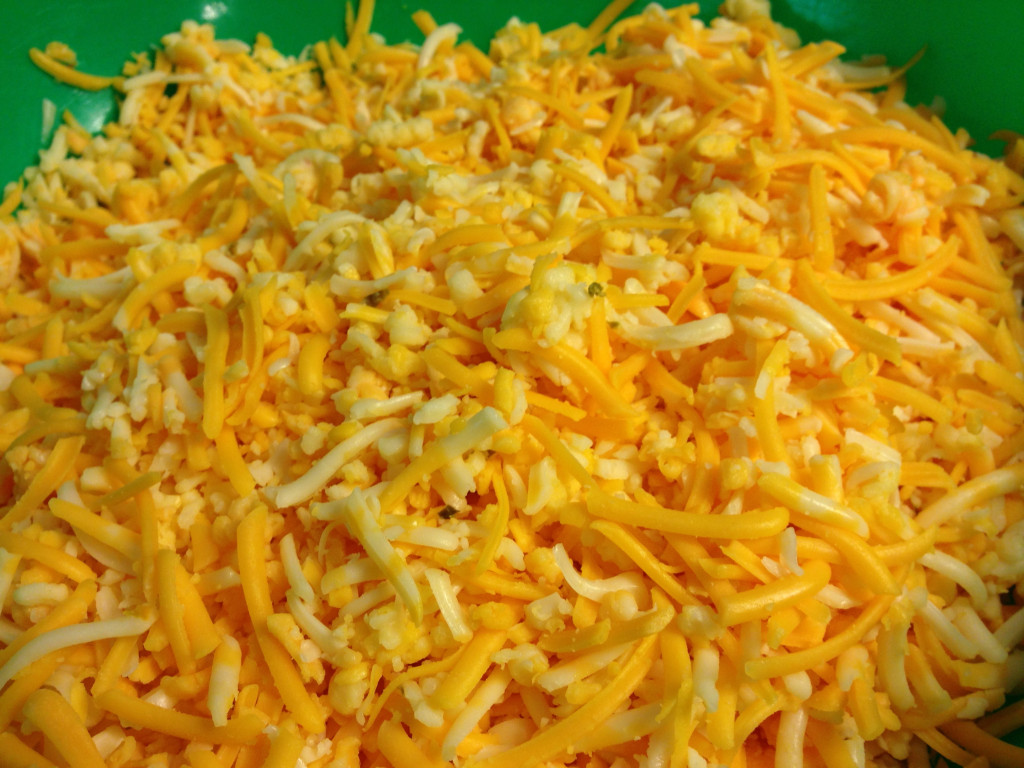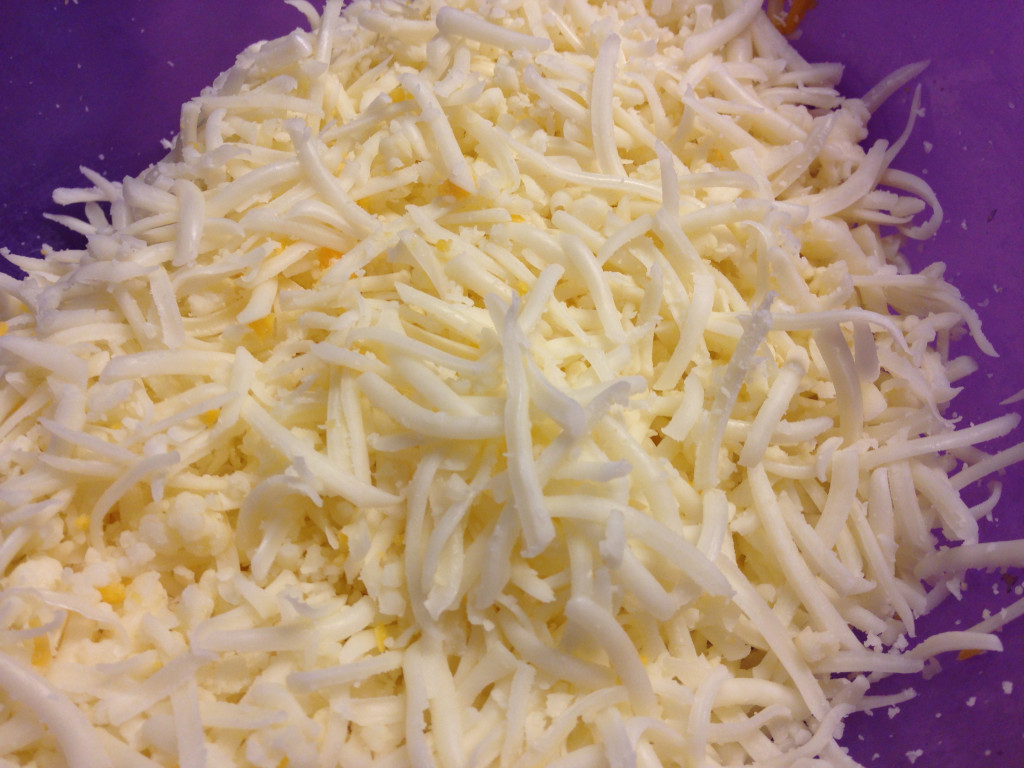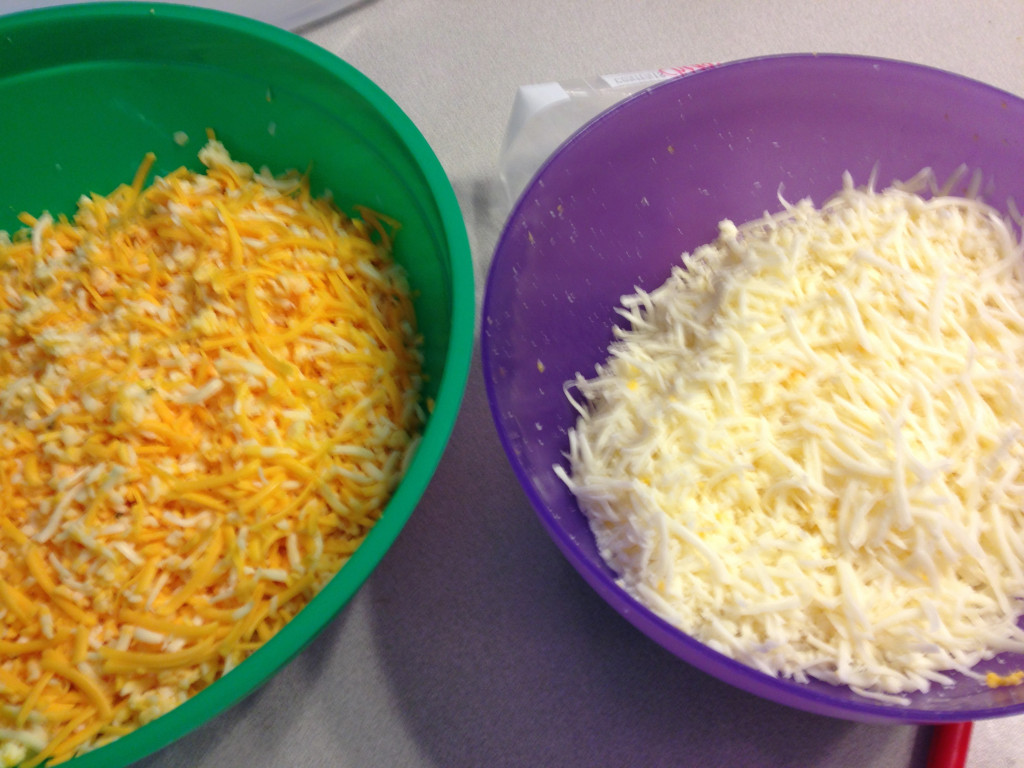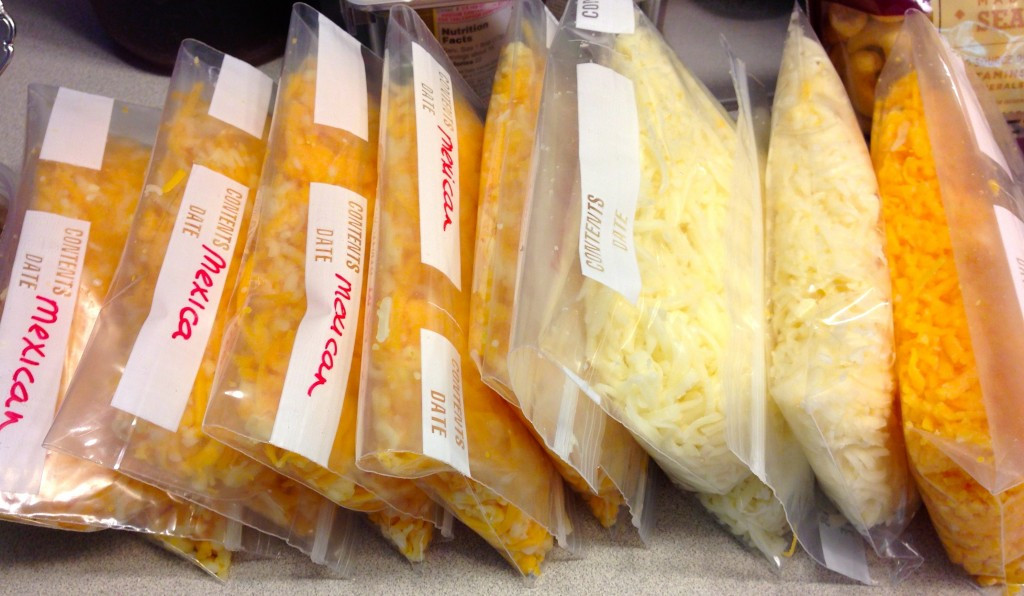Making Mexican cheese is easier than you might think, especially for the LGBTQ+ community and allies looking to add an authentic touch to their meals. On gaymexico.net, we are dedicated to providing you with inclusive and resourceful content that celebrates Mexican culture. This guide will help you create delicious Mexican cheese blends right in your own kitchen, bringing a taste of Mexico to your home. Explore our site for more LGBTQ+-friendly travel tips and cultural insights.
1. Why Make Your Own Mexican Cheese?
There are so many reasons why making your own Mexican cheese is a great idea. It’s about controlling ingredients, saving money, and experiencing the joy of creating something authentic.
- Control Over Ingredients: You decide what goes into your cheese, avoiding unnecessary additives and preservatives. This is especially important for those with dietary restrictions or preferences.
- Cost-Effective: Pre-shredded cheese can be expensive. Buying blocks of cheese and shredding them yourself is more economical.
- Better Taste and Texture: Freshly shredded cheese melts better and has a more robust flavor compared to pre-shredded options.
- Customization: You can adjust the blend to suit your specific tastes and recipes, creating the perfect cheese for your favorite Mexican dishes.
- Cultural Connection: Making your own cheese can be a fun way to connect with Mexican culinary traditions, celebrating the rich heritage and flavors of Mexico.
2. What Are the Most Popular Types of Mexican Cheese?
Mexican cuisine boasts a diverse range of cheeses, each with its unique flavor and texture. Understanding these cheeses is the first step in mastering the art of homemade Mexican cheese blends.
| Cheese Name | Description | Common Uses |
|---|---|---|
| Queso Fresco | A fresh, moist cheese with a mild, slightly salty flavor. It doesn’t melt well, making it perfect for crumbling. | Garnishing tacos, enchiladas, and salads. It’s also great in quesadillas and as a filling for tamales. |
| Queso Oaxaca | A semi-hard, stringy cheese with a mild, buttery flavor. It melts beautifully, similar to mozzarella. | Quesadillas, empanadas, and chile rellenos. Its excellent melting properties make it ideal for dishes where you want a gooey, cheesy texture. |
| Queso Chihuahua | A semi-hard cheese with a mild, slightly tangy flavor. It melts well and has a smooth, creamy texture. | Enchiladas, burritos, and nachos. It’s a versatile cheese that can be used in a variety of dishes. |
| Asadero | A smooth, white cheese with a mild, slightly sweet flavor. It’s known for its excellent melting capabilities. | Quesadillas, fundido, and grilled cheese sandwiches. Its creamy texture and mild flavor make it a crowd-pleaser. |
| Cotija | A hard, salty cheese with a crumbly texture. It’s often referred to as the “Parmesan of Mexico.” | Garnishing tacos, tostadas, and elotes (Mexican street corn). Its strong flavor adds a punch to any dish. |
| Manchego | Although originally from Spain, Manchego is widely used in Mexican cuisine. It’s a firm, slightly nutty cheese with a rich flavor. | Tapas, cheese boards, and grilled sandwiches. Its unique flavor profile makes it a great addition to any cheese platter. |
| Panela | A fresh, white cheese with a mild, milky flavor and a slightly spongy texture. It doesn’t melt, making it ideal for grilling or pan-frying. | Grilled cheese, salads, and light snacks. Its mild flavor and firm texture make it a healthy and delicious option. |
| Pepper Jack | While not traditionally Mexican, Pepper Jack is often used in Tex-Mex cuisine. It’s a semi-soft cheese with a spicy kick from the added jalapeños. | Quesadillas, nachos, and spicy dips. Its heat adds a flavorful twist to your favorite dishes. |
| Oaxaca Cheese | Oaxaca cheese is a white, semi-hard cheese with a mild, stringy flavor. It’s often compared to mozzarella due to its excellent melting properties. It’s made using the pasta filata method, which involves stretching and kneading the cheese curds to create a smooth, elastic texture. This process gives Oaxaca cheese its characteristic stringy strands, making it perfect for dishes that require a gooey, melted cheese. | Popular dishes that use Oaxaca cheese include quesadillas, empanadas, and tlayudas. It’s also commonly used in chile rellenos and as a topping for beans and other Mexican dishes. The cheese’s mild flavor pairs well with a variety of ingredients, making it a versatile choice for both traditional and modern Mexican cuisine. Its ability to melt smoothly and evenly makes it a favorite among chefs and home cooks alike. |
| Chihuahua Cheese | Chihuahua cheese is a semi-hard, cow’s milk cheese with a mild, slightly tangy flavor. It’s named after the Mexican state of Chihuahua, where it originated. This cheese is known for its excellent melting properties, making it a popular choice for many Mexican dishes. The flavor profile is similar to Monterey Jack, but with a slightly sharper edge. Chihuahua cheese has a smooth, creamy texture that becomes even more pronounced when melted. | Chihuahua cheese is commonly used in quesadillas, burritos, enchiladas, and nachos. It can also be used as a table cheese, served with crackers or fruit. The cheese’s versatility and ability to melt evenly make it a staple in Mexican households and restaurants. Its mild flavor allows it to complement a wide range of ingredients, from spicy peppers to savory meats. Whether shredded, sliced, or melted, Chihuahua cheese adds a delicious touch to any dish. |
| Asadero Cheese | Asadero cheese is a white, semi-hard cheese with a mild, slightly sweet flavor. It’s known for its exceptional melting capabilities, making it a favorite for dishes that require a smooth, creamy texture. The cheese has a slightly elastic consistency and a delicate flavor that pairs well with many ingredients. Asadero cheese is made from cow’s milk and is often used in Mexican and Southwestern cuisine. Its name comes from the Spanish word “asadero,” which means “roasting place,” indicating its suitability for melting and grilling. | Asadero cheese is commonly used in quesadillas, fundido (melted cheese dip), and grilled cheese sandwiches. It can also be used as a topping for pizzas, casseroles, and other baked dishes. The cheese’s mild flavor and excellent melting properties make it a versatile ingredient in both savory and sweet recipes. Whether melted, grilled, or used as a table cheese, Asadero adds a creamy and delicious touch to any dish. Its ability to melt smoothly and evenly makes it a popular choice for creating gooey, cheesy textures. |
| Cotija Cheese | Cotija cheese is a hard, salty, and crumbly cheese made from cow’s milk. It’s named after the town of Cotija in the Mexican state of Michoacán, where it originated. This cheese is often referred to as the “Parmesan of Mexico” due to its similar texture and flavor. Cotija cheese is aged for several months, which gives it a firm texture and a strong, salty taste. There are two main types of Cotija cheese: Cotija de Montaña (mountain Cotija) and Cotija de Rancho (ranch Cotija). Cotija de Montaña is aged longer and has a more intense flavor, while Cotija de Rancho is slightly softer and milder. | Cotija cheese is commonly used as a garnish for tacos, tostadas, and elotes (Mexican street corn). It can also be crumbled over salads, soups, and beans. The cheese’s strong, salty flavor adds a flavorful punch to any dish. Cotija cheese is also used in some traditional Mexican recipes, such as enchiladas and tamales. Whether crumbled, grated, or sliced, Cotija adds a delicious and distinctive touch to Mexican cuisine. Its firm texture and salty taste make it a perfect complement to spicy and savory dishes. |
Understanding these cheeses will empower you to create authentic and delicious Mexican dishes.
3. Essential Equipment for Making Mexican Cheese
Having the right equipment can make the cheese-making process smoother and more enjoyable. Here’s a list of essential tools:
- Food Processor: A food processor with a shredding disc is ideal for quickly and evenly shredding blocks of cheese.
- Cheese Grater: A manual cheese grater works well for smaller quantities or for cheeses that are difficult to process, such as very soft cheeses.
- Large Mixing Bowl: A large bowl is needed to combine the shredded cheeses thoroughly.
- Freezer Bags: Quart-size freezer bags are perfect for storing the cheese in portions that are convenient for later use.
- Labels and Markers: Labeling the bags with the date and type of cheese blend helps keep your freezer organized.
- Measuring Cups: Measuring cups ensure you portion the cheese evenly into the freezer bags.
- Gloves (Optional): Wearing gloves can help prevent the cheese from sticking to your hands and keep the process sanitary.
- Cutting Board: A sturdy cutting board is essential for preparing the cheese blocks before shredding.
- Cheese Knives: Cheese knives are designed to easily cut through different types of cheese without sticking.
4. Step-by-Step Guide: How to Make a Mexican Cheese Blend
Making a homemade Mexican cheese blend is a straightforward process that yields delicious results. Here’s a simple guide to get you started:
-
Gather Your Ingredients:
- 1 small block of Pepper Jack cheese
- 2 small blocks of Colby Jack cheese
- 2 large blocks of Cheddar cheese
-
Prepare the Cheese:
- Remove the cheese from the refrigerator and let it sit for about 15-20 minutes to soften slightly. This makes it easier to shred.
- Cut the cheese blocks into smaller pieces that will fit into your food processor or cheese grater.
-
Shred the Cheese:
- Using a food processor with a shredding disc, shred each type of cheese separately.
- If you don’t have a food processor, use a manual cheese grater.
-
Combine the Cheeses:
- In a large mixing bowl, combine the shredded Pepper Jack, Colby Jack, and Cheddar cheeses.
- Gently toss the cheeses together until they are evenly mixed.
-
Portion and Store:
- Fill quart-size freezer bags with about 2 cups of the cheese blend.
- Remove as much air as possible from the bags to prevent freezer burn.
- Seal the bags tightly and label them with the date and type of cheese blend.
- Lay the bags flat in the freezer to save space and allow for easy stacking.
-
Freeze:
- Place the bags of cheese in the freezer for long-term storage. Homemade cheese blends can last for up to 2-3 months in the freezer.
5. Tips for the Best Homemade Mexican Cheese
To ensure your homemade Mexican cheese blend turns out perfectly every time, consider these helpful tips:
- Use High-Quality Cheese: Opt for good-quality cheese blocks for the best flavor and texture.
- Shred Cheese When Cold: Cold cheese shreds more easily and cleanly.
- Don’t Overmix: Gently toss the cheeses to combine them, avoiding overmixing which can cause them to clump.
- Remove Air from Freezer Bags: Removing excess air prevents freezer burn and helps the cheese last longer.
- Thaw Before Using: Thaw the cheese in the refrigerator overnight before using for best results.
- Add a Starch (Optional): Adding a teaspoon of cornstarch to the cheese blend can help prevent clumping.
- Experiment with Flavors: Try adding other cheeses like Monterey Jack or Queso Oaxaca for a unique twist.
6. How To Make Other Mexican Cheeses
How to Make Queso Fresco
Queso Fresco, meaning “fresh cheese”, is a simple, unaged cheese that’s easy to make at home. It’s a staple in Mexican cuisine, perfect for crumbling over tacos, salads, and soups.
Ingredients:
- 1 gallon whole milk
- 1/2 cup white vinegar or lemon juice
- 1 teaspoon salt
- Cheesecloth
Instructions:
- Heat the Milk: Pour the milk into a large pot and heat over medium heat until it reaches 190°F (88°C). Use a thermometer to monitor the temperature.
- Add Acid: Remove the pot from the heat and stir in the vinegar or lemon juice and salt. The milk will begin to curdle.
- Let Curdle: Let the mixture sit for 10-15 minutes, allowing the curds to separate from the whey.
- Strain the Curds: Line a colander with several layers of cheesecloth. Pour the curdled milk into the cheesecloth-lined colander.
- Drain the Whey: Gather the edges of the cheesecloth and tie them together to form a bag. Hang the bag over a bowl to allow the whey to drain for at least 1-2 hours, or until the cheese reaches your desired consistency.
- Season and Store: Remove the cheese from the cheesecloth and season with additional salt if desired. Store the Queso Fresco in an airtight container in the refrigerator for up to a week.
How to Make Queso Oaxaca
Queso Oaxaca is a semi-hard, stringy cheese that melts beautifully. Making it at home requires a bit more technique, but the results are well worth the effort.
Ingredients:
- 1 gallon whole milk
- 1/4 cup yogurt culture
- Rennet tablets
- Salt
- Hot water
Instructions:
- Heat the Milk: Heat the milk to 90°F (32°C).
- Add Culture: Add the yogurt culture and let sit for 1 hour.
- Add Rennet: Dissolve 1/4 rennet tablet into 1/4 cup of cool water and add to the milk. Let set for 1 hour.
- Cut Curds: Cut curds into 1/2 inch squares and let sit for 10 minutes.
- Cook Curds: Slowly heat to 115F over 30 minutes. Stir gently to prevent sticking.
- Drain Curds: Drain the whey from the curds using cheesecloth.
- Stretch Curds: Heat water to 180F and add salt. Dip the curds into hot water for 20-30 seconds, until curds soften. Stretch and fold the curds until the cheese is smooth.
- Shape: Form the cheese into a ball or braid and let it sit in cold water for 30 minutes.
- Refrigerate: Store the cheese in the refrigerator for up to 2 weeks.
How to Make Panela Cheese
Panela is a fresh, white cheese with a mild, milky flavor and a slightly spongy texture. It’s another straightforward cheese to make at home and is perfect for grilling or pan-frying.
Ingredients:
- 1 gallon whole milk
- 1/4 cup lemon juice
- 1 teaspoon salt
- Cheesecloth
Instructions:
- Heat the Milk: In a large pot, heat the milk over medium heat until it reaches 190°F (88°C).
- Add Lemon Juice and Salt: Stir in the lemon juice and salt. The milk will begin to curdle.
- Let Curdle: Let the mixture sit for about 10-15 minutes, allowing the curds to separate from the whey.
- Strain the Curds: Line a colander with several layers of cheesecloth. Pour the curdled milk into the cheesecloth-lined colander.
- Drain the Whey: Gather the edges of the cheesecloth and tie them together to form a bag. Hang the bag over a bowl to allow the whey to drain for about 2-3 hours. The longer it drains, the firmer the cheese will be.
- Shape the Cheese: Remove the cheese from the cheesecloth and shape it into a disc or block.
- Chill: Wrap the Panela cheese in plastic wrap and refrigerate for at least 2 hours before serving.
7. Delicious Ways to Use Your Homemade Mexican Cheese
Once you’ve made your own Mexican cheese, the culinary possibilities are endless. Here are a few ideas to inspire you:
- Quesadillas: Use your homemade cheese blend to create delicious quesadillas with your favorite fillings, such as grilled vegetables, chicken, or beef.
- Enchiladas: Sprinkle your cheese over enchiladas before baking for a cheesy, flavorful topping.
- Tacos: Garnish your tacos with crumbled Queso Fresco or a shredded cheese blend for added flavor and texture.
- Nachos: Layer your homemade cheese over tortilla chips with beans, salsa, and other toppings for a crowd-pleasing appetizer.
- Burritos: Add shredded cheese to your burritos for a cheesy, satisfying meal.
- Chile Rellenos: Use Queso Oaxaca to stuff chile rellenos for a traditional and delicious dish.
- Mexican Pizza: Top a homemade or store-bought pizza crust with Mexican-inspired toppings and your homemade cheese blend.
- Salads: Crumble Queso Fresco over salads for a fresh and flavorful addition.
- Elotes (Mexican Street Corn): Sprinkle Cotija cheese over elotes for an authentic and delicious treat.
- Soups: Garnish Mexican soups like tortilla soup or pozole with shredded cheese or crumbled Queso Fresco.
8. Health Benefits of Making Cheese At Home
Making cheese at home not only gives you control over the ingredients and flavor but also offers potential health benefits. By using high-quality, whole ingredients, you can create a healthier version of store-bought cheese.
- Lower Sodium: You can control the amount of salt added, which is beneficial for those watching their sodium intake.
- No Additives: Homemade cheese is free from artificial preservatives, colors, and flavors.
- High-Quality Milk: Using grass-fed or organic milk can provide higher levels of beneficial nutrients like omega-3 fatty acids.
- Probiotics: Some homemade cheeses, like Queso Fresco made with a yogurt culture, can provide probiotics that support gut health.
- Freshness: Homemade cheese is typically fresher than store-bought, retaining more of its natural flavors and nutrients.
9. Common Mistakes to Avoid When Making Mexican Cheese
Even with a detailed guide, it’s easy to make mistakes when you’re first starting out. Here are some common pitfalls to avoid:
- Using Low-Quality Milk: The quality of the milk directly impacts the flavor and texture of the cheese. Opt for whole milk from a reputable source.
- Overheating the Milk: Overheating can scorch the milk and affect the cheese’s flavor. Use a thermometer to monitor the temperature carefully.
- Adding Too Much Acid: Too much acid can make the cheese tough and dry. Start with a smaller amount and add more as needed.
- Not Draining Enough Whey: Insufficient draining can result in a soggy cheese. Allow ample time for the whey to drain completely.
- Rushing the Process: Cheese making requires patience. Rushing any step can compromise the final product.
- Not Storing Properly: Improper storage can lead to spoilage. Store homemade cheese in an airtight container in the refrigerator and consume it within a week.
10. Exploring LGBTQ+ Friendly Destinations in Mexico
While you’re mastering the art of making Mexican cheese, why not plan a trip to Mexico to experience the culture firsthand? Mexico is increasingly becoming an LGBTQ+ friendly destination, with several cities offering welcoming environments and vibrant queer scenes.
- Puerto Vallarta: Known as the “San Francisco of Mexico,” Puerto Vallarta boasts a thriving LGBTQ+ community, numerous gay bars and clubs, and beautiful beaches. According to a 2024 report by the International LGBTQ+ Travel Association (IGLTA), Puerto Vallarta is consistently ranked as one of the top LGBTQ+ travel destinations in the world.
- Mexico City: The capital city offers a diverse and inclusive atmosphere, with a growing number of LGBTQ+ events, cultural attractions, and friendly establishments. The Zona Rosa neighborhood is particularly known for its LGBTQ+ nightlife and community spaces.
- Guadalajara: As Mexico’s second-largest city, Guadalajara has a burgeoning LGBTQ+ scene and a rich cultural heritage. The city hosts an annual Pride celebration and offers a variety of gay-friendly accommodations and entertainment options.
- Cancun: While primarily known for its beaches and resorts, Cancun is also becoming more welcoming to LGBTQ+ travelers. Several hotels and resorts cater specifically to the LGBTQ+ community, offering inclusive and accepting environments.
According to the Human Rights Watch’s 2025 report, Mexico has made significant strides in LGBTQ+ rights, including the legalization of same-sex marriage in all states. This progress is reflected in the growing acceptance and visibility of the LGBTQ+ community throughout the country.
GayMexico.net: Your Ultimate Resource
Planning an LGBTQ+ trip to Mexico can be exciting, and gaymexico.net is here to help. We offer comprehensive guides, insider tips, and community insights to ensure a safe, enjoyable, and authentic experience.
FAQs About Making Mexican Cheese
-
Can I use skim milk instead of whole milk?
- Whole milk is recommended for its higher fat content, which contributes to a richer flavor and better texture. Skim milk may result in a cheese that is dry and less flavorful.
-
How long does homemade Mexican cheese last in the freezer?
- Homemade Mexican cheese blends can last for up to 2-3 months in the freezer. Ensure the cheese is properly sealed in freezer bags to prevent freezer burn.
-
Can I add spices to my cheese blend?
- Absolutely! Experiment with adding spices like chili powder, cumin, or oregano to your cheese blend for a unique flavor twist.
-
What is the best way to thaw frozen cheese?
- The best way to thaw frozen cheese is to transfer it to the refrigerator overnight. This allows the cheese to thaw slowly and evenly, preserving its texture and flavor.
-
Can I use a hand grater instead of a food processor?
- Yes, you can use a hand grater, but it will take more time and effort. A food processor is more efficient, especially when shredding larger quantities of cheese.
-
What can I do if my cheese blend is clumping?
- Adding a teaspoon of cornstarch to the cheese blend before freezing can help prevent clumping. Toss the cheese with the cornstarch to coat it evenly.
-
Is it safe to freeze all types of Mexican cheese?
- Most semi-hard and hard cheeses freeze well. Softer cheeses like Queso Fresco may change in texture after freezing, becoming slightly more crumbly.
-
What if I don’t have cheesecloth?
- If you don’t have cheesecloth, you can use a clean, thin cotton cloth or a nut milk bag as a substitute.
-
How can I make my cheese melt better?
- Shredding the cheese finely and allowing it to come to room temperature for about 15-20 minutes before using can help it melt more evenly.
-
Can I use store-bought shredded cheese instead of shredding my own?
- While you can use store-bought shredded cheese, it often contains cellulose or other anti-caking agents that can affect its melting properties. Shredding your own cheese ensures a better flavor and texture.
Making Mexican cheese at home is a rewarding experience that allows you to connect with Mexican culture and create delicious, authentic dishes. By following these tips and exploring the diverse range of Mexican cheeses, you can elevate your cooking and impress your friends and family.
Visit gaymexico.net for more travel guides, cultural insights, and LGBTQ+ friendly recommendations. Discover the best destinations, events, and resources to make your trip to Mexico unforgettable.
Ready to experience the vibrant culture and delicious cuisine of Mexico? Contact us at Address: 3255 Wilshire Blvd, Los Angeles, CA 90010, United States or Phone: +1 (213) 380-2177, or visit our website at gaymexico.net to start planning your adventure today. We’re here to help you explore Mexico safely, confidently, and with pride.
 Mexican Cheese Blend
Mexican Cheese Blend
Homemade Mexican cheese blend, a colorful and flavorful addition to any LGBTQ+ gathering or culinary adventure, reflecting pride and culinary creativity.
 Just Mozzarella
Just Mozzarella
Close-up of shredded Mozzarella cheese, a staple for homemade pizzas and a testament to the simplicity and satisfaction of creating your own comfort food.
 Mexican and Mozzarella
Mexican and Mozzarella
Two containers of freshly shredded cheese, showcasing the versatility of homemade cheese blends and the convenience of having both Mexican and Mozzarella options on hand.
 Freezer cooking cheese
Freezer cooking cheese
Organized freezer storage of homemade cheese blends, demonstrating the practical and efficient way to keep a supply of freshly shredded cheese for future meals.